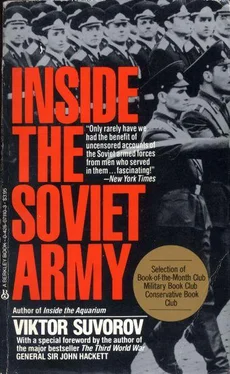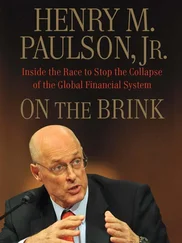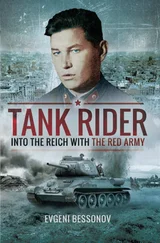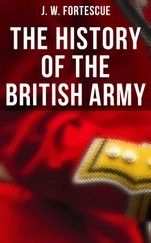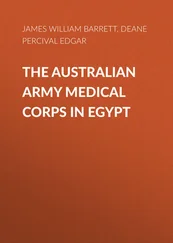It is a good thing that there are capitalists in the world, ready to come forward with help at times like these.
1
The Soviet Union has designed a large number of first-class weapons, among them the T-34 tank, the Kalashnikov automatic assault rifle and the IL-2 Shturmovik ground attack aircraft. Even today, in the early 1980s, no one has succeeded in improving on the performance of the Soviet 130mm gun, although it was developed as long ago as 1935. The Soviet Union was the first to use rockets fired from an aircraft-this was in August 1939 in Mongolia, in combat with Japanese aircraft. A Soviet motor torpedo boat (under Egyptian colours) was the first in history to use rockets to sink an enemy ship. The Soviet Union was the first to use the BM-13 salvo-firing rocket launcher. The Soviet Union was the first, many years ago, to realise the value of smoothbore guns, with their astonishingly high muzzle velocity, and it was the first to mass-produce automatic mortars and many other excellent types of weapon.
At the same time, the Soviet intelligence services, the largest in the world, search unceasingly for anything new in the field of military equipment. The enormous extent of Soviet activity in this sphere beggars description. Soviet intelligence succeeded in obtaining all the technical documentation needed to produce nuclear weapons, in winning over a number of distinguished scientists and in ideologically recruiting others as agents.
Since the war, the Soviet Union has succeeded in copying and in putting into mass production the American B-29 bomber, British Rolls-Royce aircraft engines, American lorries and German V-2 rockets. It has also completed the development of a number of German rocket designs which were still unfinished at the end of the war. It has stolen plans for the construction of French anti-tank rockets, American air-launched missiles, laser range-finders, stabilisers for tank guns, rocket fuel, special dye-stuffs and many, many other highly important products.
PART SEVEN
THE SOLDIER'S LOT
1
For 35 years (between the ages of 17 and 50) all Soviet men-and all the Soviet women whose professions might make them useful to the Armed Forces — remain on the register of those liable for military service, forming the Armed Forces reserve. This register, listing all these individuals, is maintained by Rayon City, Oblast, and Republic Commissars, who come under the orders of the Organisational Directorate of the Military Districts and, thus, ultimately, of the Chief Organisational Directorate of the General Staff.
The tens of millions of people on the register may be called up without notice, if either partial or full mobilisation is announced.
As soon as a young man is 17, he appears before a medical board and is listed on the register. The next year, as soon as he is 18, he is called up for service in the Armed Forces. Depending on the date of his birthday, this may happen in the spring (in May or June), or in the winter (in November or December).
Conscripts spend two years in all Services and arms of service, except for the Navy, in which they serve for three years.
Every year, two intakes, each of approximately a million young men join the Armed Forces and those who have completed their service are demobilized. Thus, every six months something like a quarter of the total number of other ranks changes over. New men join, the older ones leave, remaining on the reserve until they are 50.
2
Private Ivanov received instructions to report to the local assembly point on 29 May. In preparation he did three things:
— he got together with a gang of fellow spirits to beat up some of his enemies, in accordance with the principle — `Today you help me to knock the hell out of the people I don't like and then tomorrow I'll help you to do the same.
— he told his girl-friend that she was to wait two years for him, to go out with no one else and to write to him frequently — `Otherwise you'll see, I'll come back and kill you. You know me.
— on the night of 28 May he drank himself into complete insensibility. Parents realise that unless they hand over their drunken son to the assembly point by midday he will be punished under military law.
A convoy takes the crowd of drunk and half-drunk youths to the station, where they are put on a train and taken to their place of duty.
A soldier is not entitled to choose an arm of service, the area in which he will serve or the trade which he will follow in the army. Long before Ivanov received his call-up papers, the General Staff had sent all Military Commissariats details of the men they would be receiving and instructions on where they were to send them. Naturally, the General Staff does not go into details, saying no more than `150 men, of category «0» are to be sent to Military unit 54678. This may be a unit of diversionary troops, it may be a nuclear submarine, or it may be something very secret indeed. The Military Commissar can only guess. (If the number has four figures the unit belongs to either the KGB or the Ministry of Internal Affairs. If it has five, it is a Ministry of Defence unit.) This is all he is told except that there is sometimes a minor additional requirement, such as `Category «O», but all are to be tall and physically well-developed.
The Military Commissar prepares groups of soldiers by categories — for instance, 5 men from Category 1, 100 from Category 2 and 5,000 from Category 3 to military unit 64192. The Military Units receive their own instructions — `You will receive 100 men from Khabarovsk, 950 from Baku, 631 from Tbilisi.
Each Military District makes up several troop transports, provides escorts and officers, and sends them off to different corners of the huge country, while mixed columns move off to distant rocket batteries, fortified areas and motor-rifle divisions.
One requirement is sacrosanct when these selections are being made: whenever possible, Russians must not be stationed in the RSFSR, Ukrainians in the Ukraine or Latvians in Latvia. If there are disturbances among the Russian population of, for instance, Murom or Tolyatti or Omsk, these will be crushed, sometimes with considerable bloodshed, by non-Russian soldiers. If a strike breaks out in Donetsk (as one did in 1970) there will be no Ukrainian soldiers in the area. The soldiers stationed there are Tatars, Kirghiz, Georgians. It is all the same to them who they shoot at. What is important is that there is no one in the crowd confronting them whom they know and no one in it who speaks a language they can understand.
It is also essential to mix all the nationalities together in divisions, regiments and battalions. If one regiment contains too many Lithuanians and another too many Tatars, this must result from a slip-up by some military bureaucrat. The punishment for such mistakes is harsh.
The movement of such colossal numbers of men takes up two whole months. Surprisingly, the machine works extremely smoothly, rather like a sausage machine — all sorts of pieces of meat, some onions, some rusks, and some garlic are put in at one end and out of the other come solidly compressed rolls of well-mixed human material.
3
A column of new recruits is not a sight for anyone with weak nerves. Traditionally, anyone joining the army dresses in such rags that you wonder where on earth he found them. For recruits know that any more or less useable article — socks which are not in tatters, for instance — will immediately be seized from them by the soldiers escorting the column. So they dress in the sort of rags which should be thrown on a bonfire — a mechanic's boiler suit, solid with grease, a painter's working clothes daubed with paint of all colours, even a sewage-collector's overalls. Many of them will have black eyes, acquired in farewell fights with their local enemies. All are unshaven, uncombed, shaggy, dirty — and drunk, into the bargain.
Читать дальше
